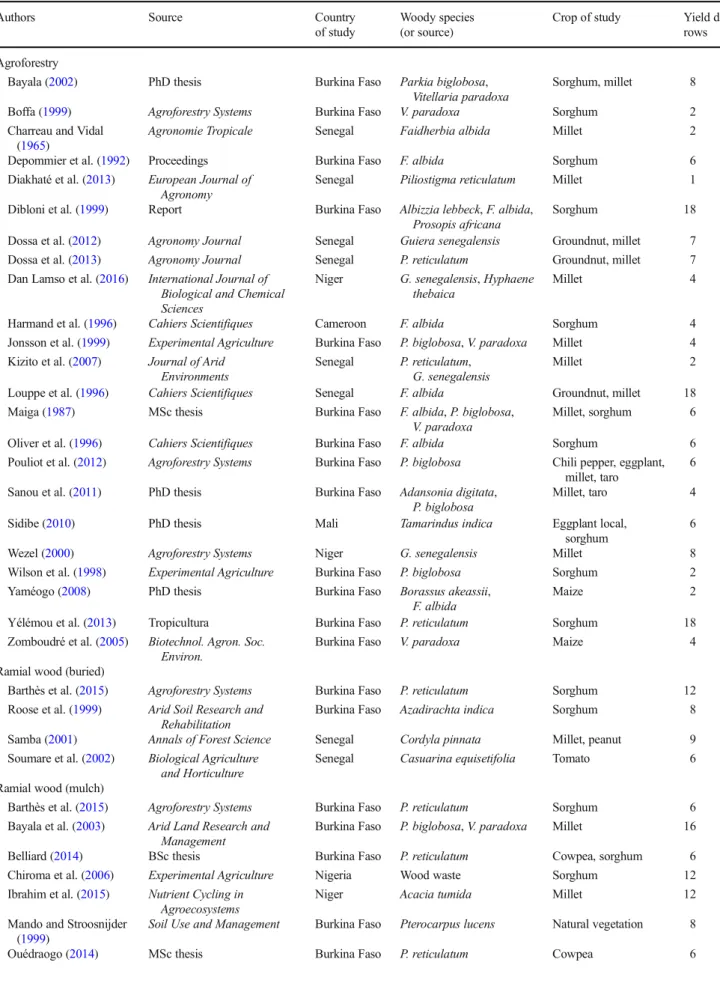Enhancing agroecosystem productivity with woody perennials in semi-arid West Africa. A meta-analysis
Texte intégral
Figure




Documents relatifs
The general aims of restoration are, in most cases to increase vegetation cover, increase biodiversity and to increase production potential for improving grazing
To unravel the effects of changes in soil fertility, or the capacity of soil nutrients to sustain crop growth, and in soil productivity, the capacity of the soil to ensure crop
Assessment methods, which include a set of mid-century climate projections, biophysical (Decision Support Systems for Agro-technological Transfer; DSSAT and Agricultural
This negative value for the GHG balance indicates that the GHG emissions are compensated by total carbon accumulation in the soil, tree. were also found for temperate
4 Department of Crop, Soil and Pest management, Federal University of Technology, PMB 704, Akure, Ondo State 5 International Crops Research Institute for the Semi-arid
Here we explore the use and management of native woody resources for providing an in situ renewable organic amendment as a basis for increasing soil carbon and biological
Livestock was a strong driver of nutrient transfers from rangelands to croplands at landscape level and an essential component of sustainable soil fertility
In our simulations, the major effect of climate change on the yields of millet and sorghum in West Africa was yield losses induced by higher temperature leading to increased



